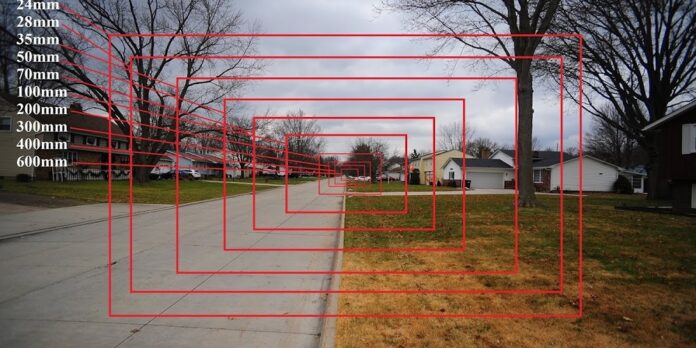In videography and photography, the term “field of view” (FOV) is commonly used to refer to the visible scene’s size that is recorded by the camera lens. The FOV is the area of the location or subject that can be seen through the camera’s viewfinder or monitor. The concept of FOV, its importance, and how it affects the final image or video will all be covered in greater detail in this article.
Understanding the Field of View
The camera lens’s angle of view (AOV) or diagonal angle of view (DAOV) determines the field of view. The AOV calculates the angle between the frame’s two opposite edges that the lens can see. On the other hand, the angle that the lens can capture between the opposing corners of the frame is known as the DAOV. Wider FOVs are possible with higher AOV or DAVO values. The FOV is additionally impacted by the camera’s sensor size, focal length, and subject distance. Wider FOVs are produced by larger sensors, while longer focal lengths have closer FOVs. Similarly to this, the FOV changes depending on how far away from the subject the camera is from the subject.
Three Types of Field of View
The three different FOVs are wide, normal, and narrow.
- Wide FOV: A wide FOV typically ranges from 70 to 120 degrees and captures a comprehensive view of the surroundings. When the photographer wants to capture as much of the scene as possible, wide FOV lenses are perfect for group portraits, interior shots, and landscape photography.
- Normal FOV: A normal FOV is 40 to 70 degrees, and it replicates the field of view of the human eye. When a photographer wants a realistic and unaltered view, they frequently use normal FOV lenses for street photography, portraiture, and photojournalism.
- A narrow field of view (FOV) captures a close-up view of the subject and is less than 40 degrees. When a photographer wants to capture a particular detail or action, they frequently use narrow FOV lenses in surveillance, sports, and wildlife photography.
Perspective and FOV
The FOV significantly affects how the image or video is viewed. A wide field of view (FOV) gives the impression that the subject and background are separated by depth and distance. On the other hand, a small FOV condenses the scene, making the background seem nearer to the subject.
FOV and Distortion
The FOV also impacts the image or video distortion. In particular, wide FOV lenses tend to have more distortion at the frame’s edges. Depending on the type of distortion, straight lines may appear curved (barrel distortion), or the edges of the image may appear stretched (fisheye distortion). Normal FOV lenses have little distortion, which makes them perfect for taking realistic and authentic-looking pictures. Although they can give the illusion of compression and flatter the image, narrow FOV lenses also have little distortion.
Conclusion
In conclusion, the FOV plays a key role in photography and videography by determining the scene size that the camera can see. To produce images and videos of the highest caliber, one must thoroughly understand the FOV and how it affects perspective and distortion. Photographers and videographers can manipulate the FOV to achieve their desired effect by selecting the proper lens and changing the camera’s position.




